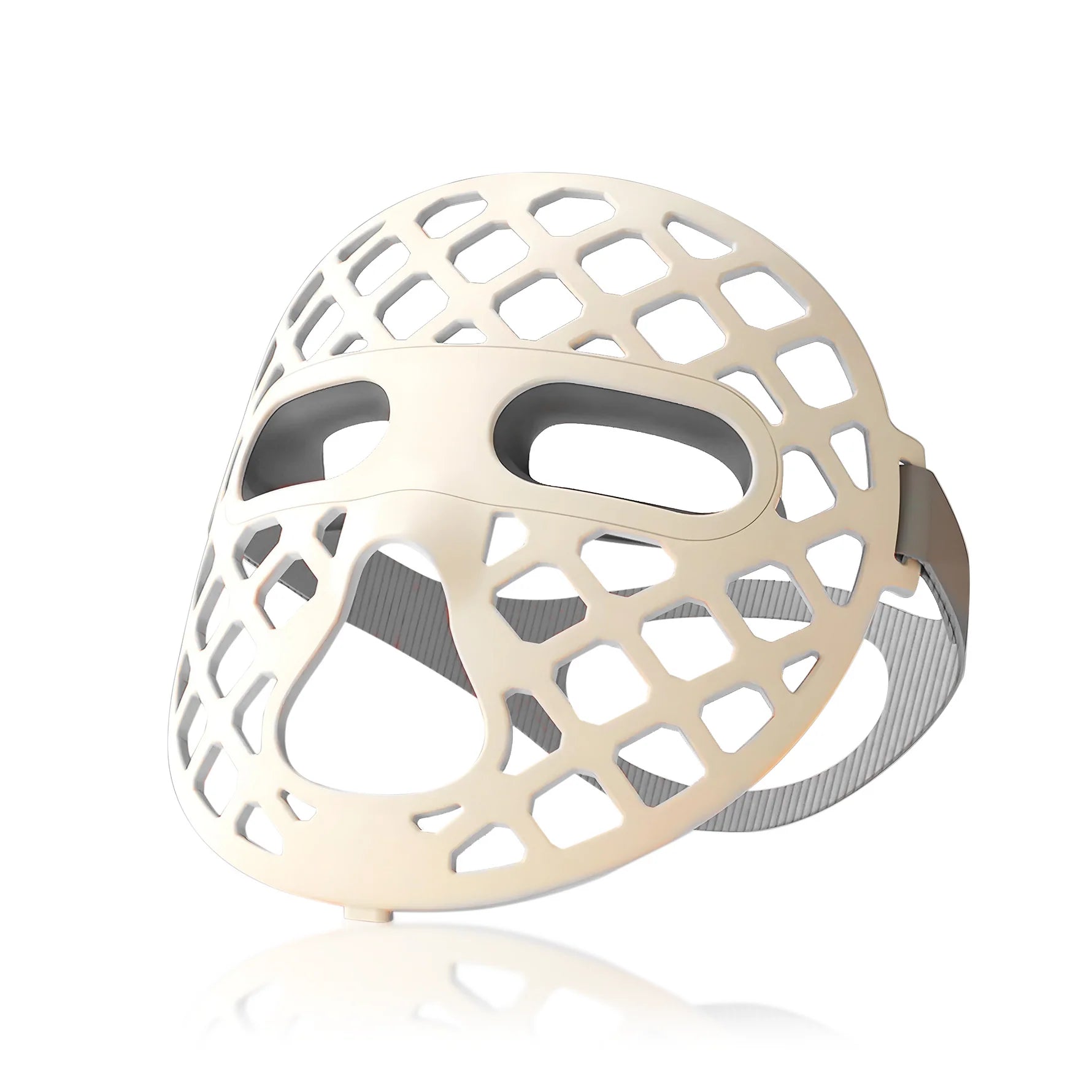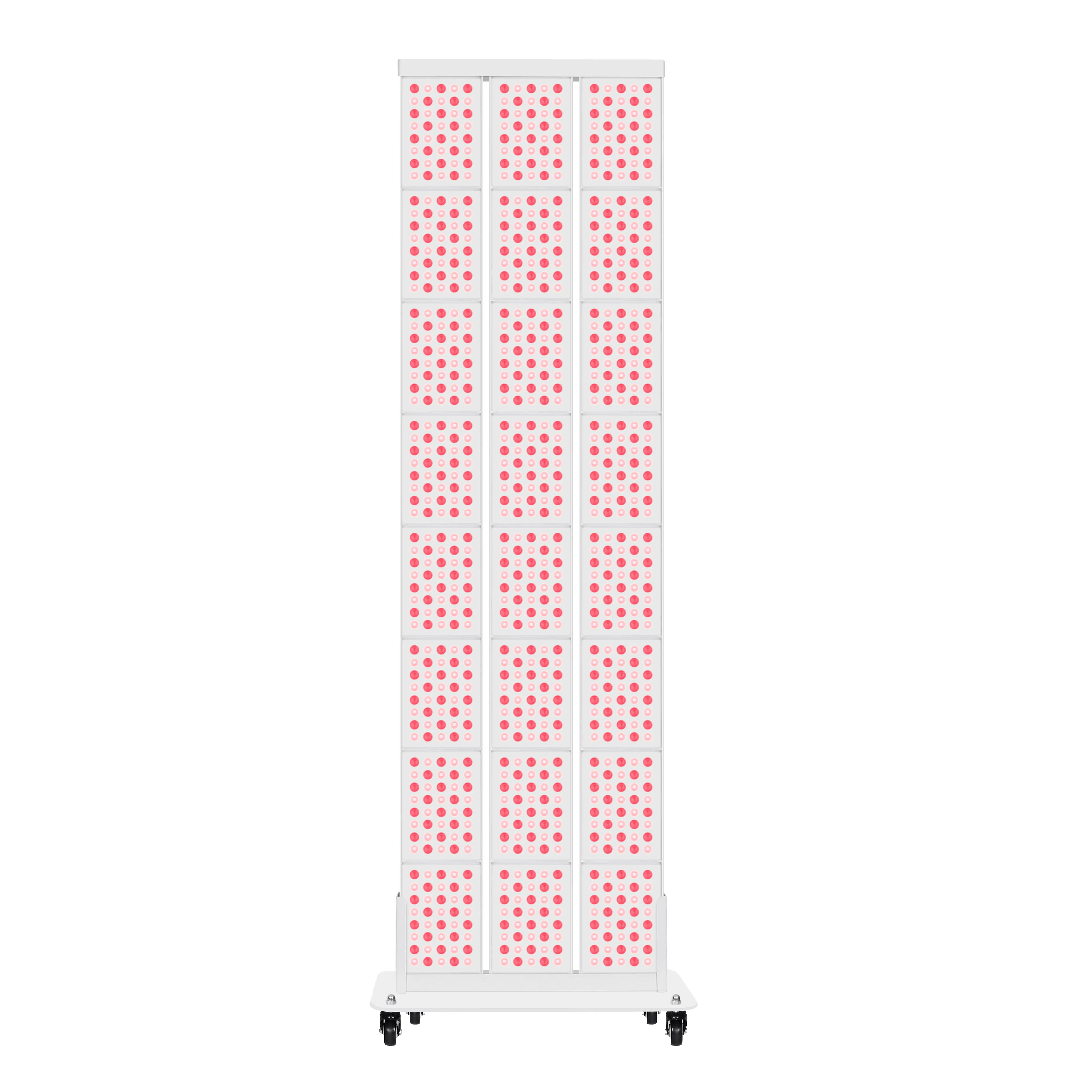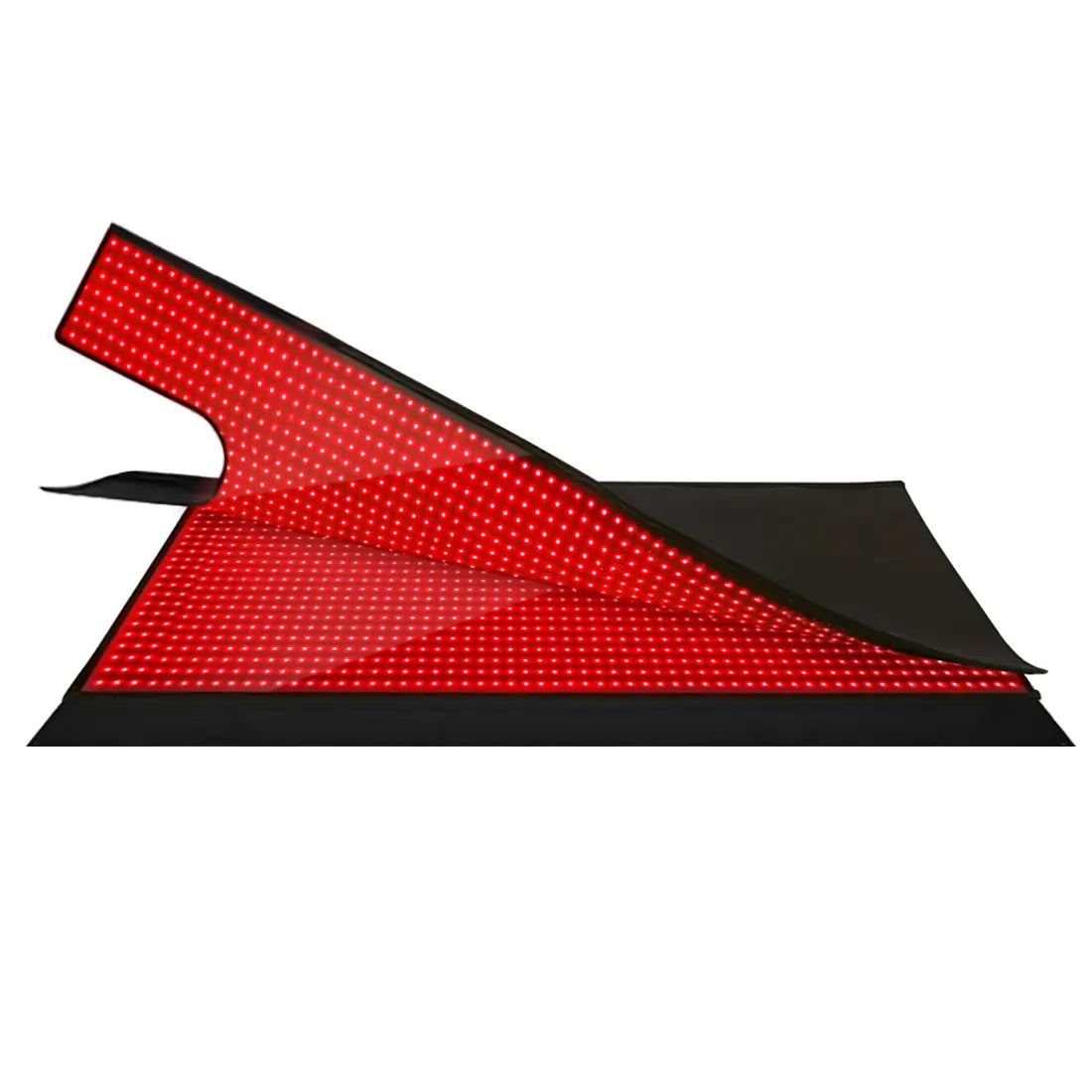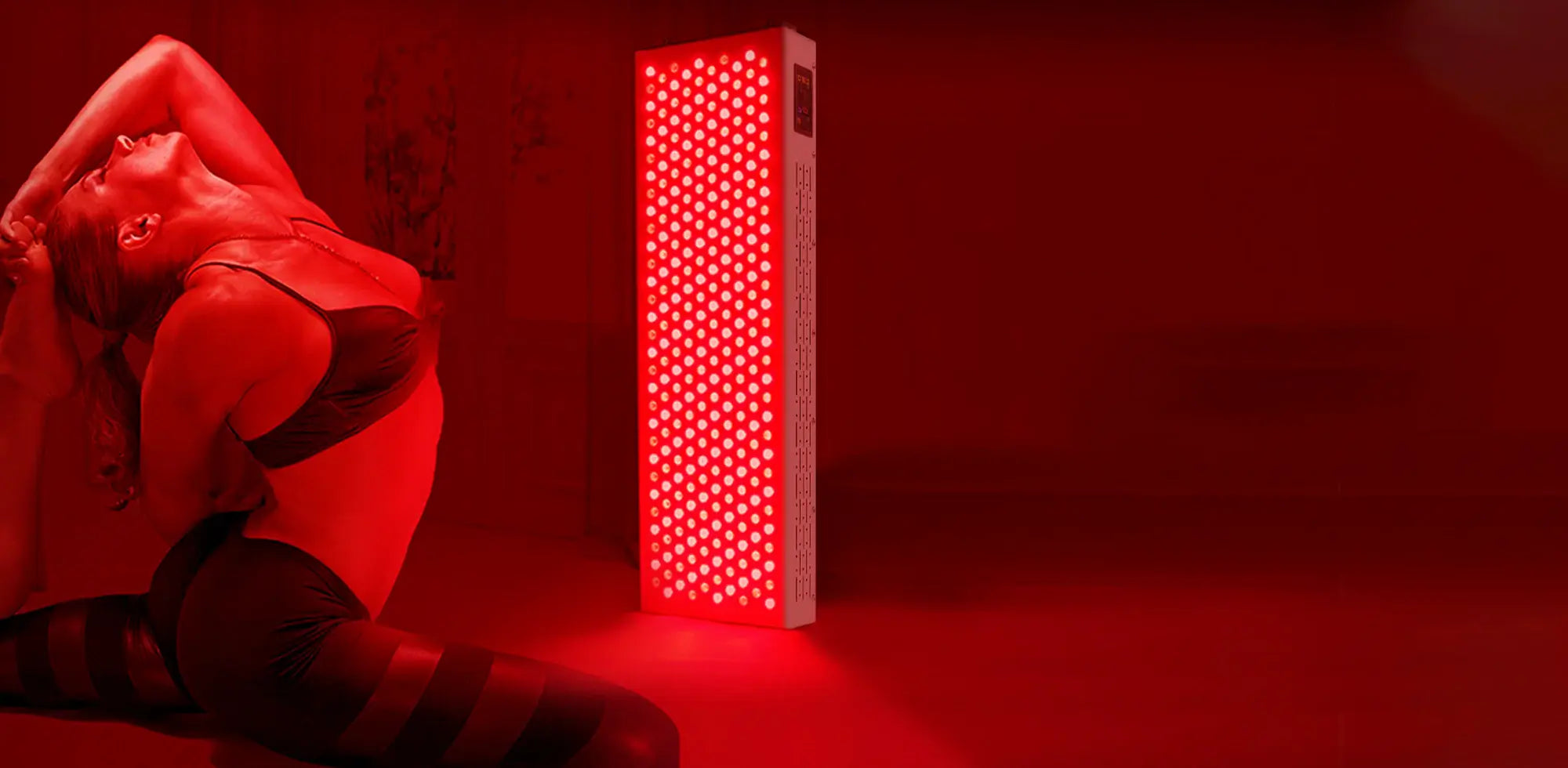Walk into any modern medspa or dermatologist’s office and you will see two very different “technologies of youth” side by side. One is a syringe of botulinum toxin, designed to silence overactive facial muscles. The other is a glowing field of red LEDs, quietly bathing skin in gentle light. As someone who designs LED installations for both commercial spaces and treatment rooms, I am often asked a deceptively simple question: if red light therapy can smooth wrinkles and rejuvenate skin, can it actually replace injections?
The honest answer is nuanced. Red light therapy is not a soft-focus version of botulinum toxin. The two work in fundamentally different ways, deliver different kinds of results, and demand different levels of commitment. Understanding those differences is the key to building a realistic, skin-safe plan that fits your goals, budget, and comfort with procedures.
In this guide, I will break down what the science says about red light, how it compares to neuromodulator injections, and where each belongs in a modern skin-aging strategy.
What Red Light Therapy Actually Is
Red light therapy, often called LED light therapy, low-level light therapy, or photobiomodulation, uses low-energy red or near-infrared light to influence how cells behave rather than to burn or remove tissue. Cleveland Clinic describes it as exposing skin to low levels of red light to help with concerns like wrinkles, scars, redness, and acne. Stanford Medicine notes that “photobiomodulation” became an official medical research heading in 2015, and since then hundreds of studies have explored how specific wavelengths of light can alter biological processes.
Most cosmetic red light devices use wavelengths in the visible red range around about 630 to 670 nanometers, sometimes combined with near-infrared light around about 800 to 830 nanometers. These wavelengths do not include ultraviolet, so they do not deliver the DNA damage associated with sunburn and skin cancer. Instead, they penetrate into the epidermis and dermis and are absorbed primarily by mitochondria, the “power plants” of your cells.
From a lighting-engineering standpoint, what matters is not just color, but dose. Clinical trials summarized by Stanford Medicine and published in medical journals describe exposures in the neighborhood of about 8 to 16 joules per square centimeter per session, delivered over roughly ten to twenty minutes at a non-heating power density. One home-use mask study at 630 nanometers used twelve-minute sessions, twice per week for three months in adults with visible facial aging and reported measurable improvements in wrinkles, firmness, dermal density, and skin smoothness, with benefits persisting for about a month after stopping treatment. A larger controlled trial with 136 volunteers using red polychromatic light in the 611 to 650 nanometer band, twice weekly for thirty sessions, showed statistically significant improvements in intradermal collagen density, skin roughness, and physician-rated wrinkle appearance compared with untreated controls.
In other words, under carefully controlled conditions, red LED light can help restructure the skin, not just temporarily plump it.
How Red Light Acts On Skin
Across sources such as Stanford Medicine, Harvard Health, UCLA Health, and Cleveland Clinic, four main mechanisms come up repeatedly.
First, red light boosts mitochondrial activity. The light is absorbed by components of the respiratory chain, including cytochrome c oxidase, which increases adenosine triphosphate (ATP) production. More ATP gives fibroblasts and keratinocytes more energy to repair damage and synthesize new matrix components.
Second, fibroblasts ramp up collagen and elastin production. Dermatology briefs from Arizona Dermatology and West Dermatology explain that red light stimulates fibroblasts to make more of these structural proteins, which support skin firmness, elasticity, and resilience. Over time, this can soften fine lines and improve sagging.
Third, inflammation decreases and circulation improves. Red light has measurable anti-inflammatory effects, helping to calm conditions such as acne, rosacea, and eczema while improving blood flow to treated tissue. Better circulation supports tissue repair and can brighten a dull, uneven complexion.
Fourth, wound healing and scar remodeling may improve, at least in some scenarios. Studies reviewed by Stanford Medicine and UCLA Health show mixed but intriguing results: in certain surgical and wound settings, red light–treated sites healed faster initially, although differences sometimes faded by six weeks. For everyday skin, this translates into potential support for post-procedure recovery and reduced visibility of acne or surgical scars.
The overarching pattern is that red light nudges skin biology toward repair and balance. It does not freeze muscles, peel off the surface, or fill deep creases. Instead, it quietly encourages skin to behave more like it did when it was younger.
What The Evidence Shows For Wrinkles
When you look at the skin-aging data specifically, several themes emerge.
Controlled clinical studies of red light masks and panels, including the twenty-person mask trial and the one hundred thirty-six-person polychromatic study mentioned earlier, report improvements in fine wrinkles, texture, and collagen density with regular use over about three months. Patient-rated complexion and “skin feeling” improve, and blinded physician reviewers can see visible changes in standardized photographs.
Dermatology organizations remain cautiously optimistic. The American Academy of Dermatology describes the evidence for LED devices as early but promising: small studies show modest improvements in mild acne and signs of aging, yet large, long-term trials are still lacking. Harvard Health reaches a similar conclusion, noting that red light can stimulate fibroblasts and may reverse some features of photoaging, but that it should not be considered a cure for every skin concern.
Stanford experts go even further in their nuance. They classify red light therapy as biologically active and meaningful for certain indications, with some wrinkle reduction and improved texture, but they emphasize that it is far from a panacea and that many wellness claims are not yet backed by strong evidence.
In practical terms, this means red light therapy can realistically help with fine lines, mild to moderate textural changes, and overall radiance when used consistently for weeks to months. It is not, by itself, a quick fix for deeply etched expression lines.
Safety And Device Realities
Safety is where red light shines compared with many other interventions. Because it uses non-UV, low-level light, short-term use as directed is generally well tolerated. Cleveland Clinic, the American Academy of Dermatology, Harvard Health, UCLA Health, and WebMD all describe typical side effects as mild and temporary: slight redness, tightness, or irritation, usually if sessions are too long or too frequent. Long-term safety, especially with very frequent use over years, is still being studied, so experts recommend a balanced approach rather than daily marathons.
There are important precautions. Light near the face means eye protection is essential. Professional devices provide goggles, and at-home masks and panels should never be used with eyes open unless the product is explicitly designed for that and cleared accordingly. Past recalls of certain acne masks over eye-safety concerns underscore that this is not optional.
People taking medications that increase light sensitivity, those with a history of skin cancer, and individuals with very reactive or deeply pigmented skin should talk with a dermatologist before starting. The American Academy of Dermatology and UCLA Health both stress this point, noting that people with darker skin tones may have a higher risk of treatment-induced dark spots if parameters are not chosen carefully.
Finally, device quality matters greatly. Stanford Medicine and an investigative report summarized by public radio coverage point out that at-home devices are weakly regulated, specifications can be unreliable on bargain marketplaces, and more is not better. Dermatology organizations recommend looking for FDA-cleared devices for specific indications, using them exactly as directed, and being skeptical of products promising dramatic, rapid transformations.
A Quick Primer On Neuromodulator Injections
Botulinum toxin injections, by contrast, are not about illuminating the skin at all. They are neuromodulators designed to temporarily relax specific muscles.
In routine cosmetic practice, tiny doses are injected into facial muscles that create dynamic wrinkles: think of the “eleven” lines between the eyebrows when you frown, the horizontal lines across the forehead when you raise your brows, or the crow’s feet that appear when you smile. By blocking nerve signals to these muscles, the injections reduce their ability to contract. Over several days, the overlying skin smooths because it is no longer being folded repeatedly.
The key distinction is that neuromodulator injections work primarily on motion-driven lines, not on skin quality itself. They do not rebuild collagen, fade sun damage, or refine pore texture. Most people pair them with other skincare strategies, like sunscreen and topical retinoids, to address those issues.
Injections are medical procedures delivered in-office, usually a few times per year, by trained clinicians. Results are often visible within the first week and peak around two weeks. For many people, this fast, targeted effect is the primary appeal: deep frown lines and etched expression creases can be noticeably softened or almost erased, even if underlying sun damage remains.
Dynamic Versus Static Wrinkles
Understanding where red light and injections overlap starts with distinguishing dynamic from static wrinkles.
Dynamic wrinkles are created by repeated muscle contraction. A forehead that creases only when you raise your brows, or crow’s feet that appear mainly when you smile, are classic examples. When muscles are relaxed at rest, the skin may look largely smooth. Neuromodulator injections excel here because they address the root cause: overactive muscles.
Static wrinkles are visible even when your face is at rest. They reflect long-term collagen loss, thinning skin, sun damage, and chronic folding over many years. Fine crosshatching on the cheeks, vertical lines around the mouth, and generalized crepiness fall into this category. This is where red light therapy’s collagen-boosting, texture-smoothing effects are most relevant.
Of course, many real-world faces have a mix of both. A deep glabellar groove, for example, usually began as a dynamic line and eventually etched into the skin. No single tool will address every component equally well.

Red Light Versus Injections: Different Tools, Different Jobs
To see the contrast clearly, it helps to line up the two approaches side by side.
Aspect |
Red light therapy |
Botulinum toxin injections |
Primary target |
Skin cells, especially fibroblasts and inflammatory pathways |
Specific facial muscles that create expression lines |
Mechanism |
Photobiomodulation increases ATP, collagen, elastin, circulation, and reduces inflammation |
Blocks nerve signals to muscles, reducing their ability to contract |
Best for |
Fine lines, early crepiness, texture, tone, mild redness, post-procedure recovery |
Moderate to deep dynamic lines like frown lines, forehead lines, crow’s feet |
Onset of visible effect |
Gradual; typically weeks to months with repeated use, as shown in clinical mask and panel studies |
Generally within days, with peak effect around two weeks after treatment |
Invasiveness |
Noninvasive light exposure; no needles, no downtime |
Minimally invasive injections; brief procedure with potential for mild bruising or swelling |
Side effects (used correctly) |
Mild temporary redness or tightness; long-term safety still being studied |
Local pain, small bruises, eyelid or brow droop if product diffuses beyond target, rare systemic reactions |
Commitment pattern |
Many short sessions per week, ongoing for maintenance |
Few office visits per year, with each treatment’s effect wearing off over several months |
Evidence for wrinkles |
Modest but meaningful improvements in fine lines, collagen, and skin quality in small to medium-sized trials; not a panacea according to Stanford and Harvard |
Longstanding, robust clinical use with clear efficacy for dynamic facial lines in cosmetic dermatology practice |
When I help clinics plan treatment rooms, this distinction shows up even in how they lay out their spaces. The injectable chair is designed for quick, targeted appointments a few times a year. The red light corner is more like a lounge: clients settle in regularly for gentle sessions that slowly build results over time. The lighting strategies are different because the biological strategies are different.
Can Red Light Therapy Replace Botulinum Toxin Injections?
With all that in mind, can you skip injections entirely and rely on red light instead?
For many people who already have moderate to deep expression lines and want them significantly reduced, the answer is no. Red light therapy, as documented by Cleveland Clinic, Harvard Health, Stanford Medicine, and others, offers modest improvements in wrinkles and texture, not the dramatic smoothing that neuromodulator injections can provide for dynamic lines. Light cannot physically relax a muscle in the way a neuromodulator does.
However, there are important scenarios where red light can function as a practical alternative or at least as a first-line option.
If your main concerns are early fine lines, dullness, or uneven tone, and you prefer to avoid needles, red light therapy can be a reasonable choice. Clinical trials have shown that using a well-designed red LED mask or panel two or three times per week for several months can improve skin smoothness, firmness, and radiance. Practices highlighted by Dp Dermaceuticals, West Dermatology, and Steel City Dermatology position high-quality red LED devices as core tools for comprehensive rejuvenation of the face, neck, chest, and even hands.
If you are focused on overall skin health, not just wrinkles, red light’s broader benefits matter. The anti-inflammatory effects documented by Arizona Dermatology and the American Academy of Dermatology can support acne-prone or sensitive skin. Red light is also frequently used immediately after procedures like microneedling to calm redness and speed recovery, a role that injections simply do not fill.
And if you want to stretch your skincare investment across more areas, red light’s “coverage” is a strength. Panels and flexible masks can bathe large surfaces, including the neck, chest, and hands, all of which often show aging as prominently as the face. Injections are precise but localized; light is diffuse and area-based.
Still, for an etched frown line you want gone in time for an important event, neuromodulator injections remain the more powerful tool. Red light can help support the surrounding skin, make texture more refined, and reduce redness, but it will not completely erase a deep crease on its own.
Designing A Realistic Red Light Plan As Your Main Anti-Aging Tool
If you decide to lean into red light as your primary “engineer” of skin quality, think of it the way I think about architectural lighting: success depends on placement, spectrum, intensity, and consistency.
Clarify Your Goals And Your Wrinkle Type
Start by being specific. If you primarily see fine, crosshatched lines, mild crepiness, or a general lack of glow, red light is well aligned with your needs. If your main frustration is a single deep groove between the brows, a more structural intervention may still be required. A consultation with a board-certified dermatologist can help you sort out which lines are dynamic and which are static, and whether a no-needle plan is realistic for the results you want.
Choose Evidence-Aligned Technology
The research-backed sweet spot for skin rejuvenation sits around red wavelengths in the roughly 630 to 670 nanometer range, with some protocols adding near-infrared light around about 830 nanometers for deeper penetration. Devices like the at-home mask studied in peer-reviewed research and systems described by Dp Dermaceuticals and Steel City Dermatology use exactly these bands.
Look for devices that are:
Visibly designed to sit close and flush to the skin, like flexible silicone masks or panels with even LED spacing. In lighting design, hotspots and dark spots are the enemy; the same is true here.
Labeled with precise wavelengths rather than vague terms like “red glow.” Clinical devices specify numbers such as 633 nanometers red and 830 nanometers near-infrared, not just colors.
Cleared by the FDA for specific indications such as mild to moderate facial wrinkles or acne, as recommended by the American Academy of Dermatology and Harvard Health. Clearance focuses on safety, not guaranteed effectiveness, but it filters out the most poorly characterized products.
Avoid overpowered claims and underpowered hardware. If a panel feels more like a space heater than a spa light, something is off. If a mask has a handful of dim diodes, it may not approach the doses used in studies even with long sessions.
Commit To A Sustainable Schedule
The routines documented in research and used in dermatology offices share a common thread: regular, repeated exposure over months.
The twenty-person home-mask trial used twelve-minute sessions twice per week for three months. The larger facial rejuvenation trial used twice-weekly sessions for thirty treatments, roughly a three to four month arc. Practical guides from West Dermatology, Skin Therapeutics, and UCLA Health converge on schedules of about ten to twenty minutes per session, two or three times per week at the outset, then tapering to weekly or every-other-week maintenance after you see changes.
Think of it like a gym habit for your skin. You will not see a new complexion in a weekend, but you can absolutely see gradual improvement over a season if you keep showing up.
Pair Light With Intelligent Skincare
Because red light increases cellular activity and can enhance product absorption, what you put on your skin around a session matters.
Post-treatment guidelines from Lumivisage recommend a simple, hydrating routine immediately after light exposure: gentle cleansing only if needed, a hydrating serum with ingredients like hyaluronic acid or niacinamide, followed by a barrier-supporting moisturizer with ceramides, peptides, or squalane. If you are treating during the day, a broad-spectrum sunscreen rated at least SPF 30 should be your last step to protect newly energized skin from ultraviolet damage.
Avoid using strong exfoliating acids or retinoids immediately before or right after red light sessions unless a dermatologist specifically advises it. Lumivisage and dermatology sources caution that freshly stimulated skin can be more reactive, and piling on aggressive actives may tip you into irritation.
Keep the routine simple: cleanse gently, illuminate, hydrate, and protect. Overcomplicating the product lineup does not add to the light’s effect and can undermine your results.
Protect Eyes And Respect Sensitivities
Even though red light is visible, not ultraviolet, eye safety is non-negotiable. The American Academy of Dermatology and Harvard Health both emphasize the need for protective eyewear and caution around devices that sit very close to the eyes. A high-profile recall of a consumer acne mask because of potential eye damage in susceptible users is a reminder that even “gentle” light therapy must be respected.
If you take medications known to increase light sensitivity, have a history of skin cancer, or have very dark or very reactive skin, involve a dermatologist before starting. Cleveland Clinic, UCLA Health, and WebMD all advise medical guidance in these scenarios, and note that insurance rarely covers cosmetic red light therapy, so it is worth making sure you are a good candidate before you invest time and money.

Myths, Limits, And Red Flags
Because red light panels and masks are easy to market, the internet is full of claims that far outstrip what reputable institutions report.
Cleveland Clinic and Stanford Medicine both point out that there is no good scientific evidence that red light therapy alone causes meaningful weight loss, treats cancer, removes cellulite, or reliably treats mental health conditions like depression or seasonal affective disorder. WebMD similarly notes that while photobiomodulation may temporarily reduce body circumference in treated areas, it does not cause true fat loss.
Claims that red light will fix serious medical problems without other treatment, or that it replaces established therapies like sunscreen or prescription acne medication, should be treated as red flags. Harvard Health explicitly notes that sunscreen and vitamin A–based topicals have a far more robust evidence base for anti-aging than any light device. Stanford experts recommend viewing red light therapy as a promising adjunct with specific strengths, not as a cure-all.
Another misconception is that daily, prolonged sessions are better. In reality, research and expert commentary suggest there is an optimal dose range. Too little does not move the needle; too much may inhibit beneficial responses or trigger side effects. The mask study and large rejuvenation trial both used a few sessions per week, not daily marathons. Public radio coverage quoting researchers also warns that overuse can break small blood vessels or darken existing pigmentation in some individuals.
If a device or provider pushes very long, very frequent sessions as the main selling point, or promises dramatic lifting and tightening in a couple of weeks, that is reason to pause and ask hard questions.

FAQ
Can I use red light therapy instead of starting injections if I am just beginning to see fine lines?
If your lines are mostly fine and appear more as crepiness or slight etching than deep grooves, it is reasonable to try a red light–centered plan first, especially if you pair it with daily sunscreen and a thoughtful skincare routine. Studies of red light masks and panels over about three months show improvements in fine wrinkles and overall skin quality, and dermatology sources describe red light therapy as a gentle, noninvasive anti-aging tool. The key is to set your expectations correctly: think softer, more luminous skin rather than a frozen or dramatically smoothed forehead.
If I already get neuromodulator injections, is adding red light therapy worth it?
Red light and injections operate on different layers of the system. Injections address muscle movement; red light supports the skin itself by promoting collagen, calming inflammation, and improving texture and tone. Many dermatology clinics use red light around other procedures, particularly after treatments such as microneedling, because of its reparative effects. If you already rely on injections for certain lines, adding red light can be a way to invest in the quality of the skin that sits above those muscles. It is important to coordinate timing and protocols with your injector or dermatologist so that everything is tailored to your individual skin.
Are at-home red light devices strong enough to make a difference?
Dermatology organizations and academic centers such as the American Academy of Dermatology, Harvard Health, and Stanford Medicine agree that at-home devices are typically less powerful than in-office systems, but that does not mean they are useless. The home-use mask that showed meaningful anti-aging benefits in a peer-reviewed trial was explicitly designed for consumer use, with carefully chosen wavelengths and doses. The trade-off is consistency: lower-power devices usually require very regular use over longer periods. Choosing a well-built, FDA-cleared device in clinically relevant wavelengths and using it exactly as directed matters more than chasing maximum brightness.
How long should I try red light therapy before deciding whether it works for me?
Most of the better-designed studies run for at least eight to twelve weeks, with two or three sessions per week. Dermatologists writing for Harvard Health suggest that multiple sessions per week for four to six months are often needed for noticeable cosmetic improvement, with continued maintenance required to sustain results. A practical benchmark is to commit to a consistent schedule for three months, document your skin with good before-and-after photos in similar lighting, and then reassess with your dermatologist. If you see no change at all after that level of commitment, it may be a sign that your particular concerns need a different or additional intervention.
Closing Thoughts From A Lighting Perspective
As a lighting specialist, I see red light therapy as a beautifully engineered accent system for your skin’s architecture. It can warm the space, smooth the rough edges, and reveal texture in a more flattering way, especially when it is tuned to the right wavelength and used consistently. Neuromodulator injections, by contrast, are structural edits to the underlying framework.
For some faces and goals, well-designed red light can comfortably stand in for injections, especially early on. For others, it is best viewed as a powerful companion, not a replacement. If you treat light as one intelligent layer in a larger plan, built with your dermatologist’s guidance, you can create a skin “lighting design” that feels natural, age-respecting, and genuinely sustainable.
References
- https://lms-dev.api.berkeley.edu/studies-on-red-light-therapy
- https://florida-academy.edu/the-benefits-of-led-light-therapy-a-revolutionary-skin-treatment/
- https://www.health.harvard.edu/diseases-and-conditions/led-lights-are-they-a-cure-for-your-skin-woes
- https://pmc.ncbi.nlm.nih.gov/articles/PMC10311288/
- https://med.stanford.edu/news/insights/2025/02/red-light-therapy-skin-hair-medical-clinics.html
- https://www.brownhealth.org/be-well/red-light-therapy-benefits-safety-and-things-know
- https://www.npr.org/transcripts/nx-s1-5527867
- https://my.clevelandclinic.org/health/articles/22114-red-light-therapy
- https://www.gundersenhealth.org/health-wellness/aging-well/exploring-the-benefits-of-red-light-therapy
- https://www.uclahealth.org/news/article/5-health-benefits-red-light-therapy











